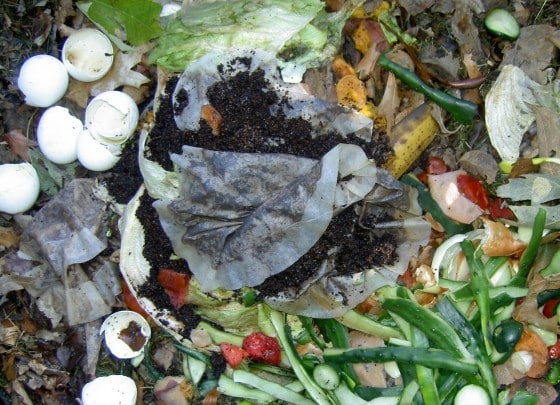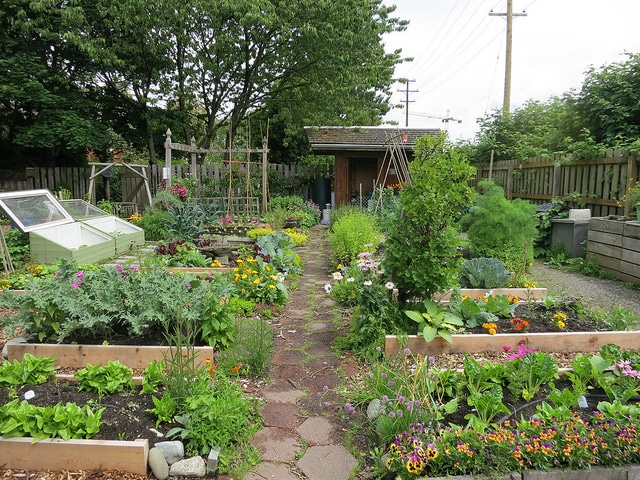
The Compost Breakdown: Digging Into Composting Issues
What You Can and Can’t Compost
As a first time composter, few things are as frustrating as turning up your initial mound of fresh compost and finding a perfectly intact “compostable” fork glaring back at you. Why didn’t it break down? For that matter,
- Why does the compost pile stink to high heaven?
- Why is it dripping this ugly, sludgy goo?
- Why are animals breaking into my compost bin and how do I stop them?
- What can I compost, really?
When you have just the right balance and you’re tossing in the right ingredients, composting can become almost effortless and relatively smell-free, but when you’re first venturing into the practice there can be a lot of learning phases that might leave you feeling sour. Before building or purchasing your first bin, keep the following tips in mind to ensure healthy compost with a quick turnover.
Low Odor Compost
The main reason compost bins begin to stink and/or leak a foul-smelling liquid is not because you threw in a rotten watermelon or moldy tomatoes, but because you probably threw in too many without balancing it out. Compost needs to have just the right balance of nitrogen-rich and carbon-rich items to break down properly. Other reasons might include:
- Not turning over the pile when new items are added
- Pile is too wet
- Items such as meats and dairy products have been added
The ideal compost balance is three parts “brown” compost to one part “green.” Brown composts include all of your woody, fibrous items that are rich in carbon such as newspapers, leaves, dryer lint, ashes and wood chips. Green composts are the items you would toss in from your kitchen such as fruits, veggies, coffee grounds and baked goods as well as grass trimmings. The idea is to keep the pile breathing and more brown composts allow for a drier and more breathable environment. To keep your compost pile breathing and balanced:
- Turn it over every time you add new items
- For every kitchen scrap deposit you make, add three times as much dry yard waste or other brown compost
- If the compost is getting rained on too much, consider moving it to a more shaded, sheltered area or covering it loosely with a tarp
Animal Infestation
Bugs and worms are welcome creatures in your compost bin but rodents and other wildlife are not. If you’re doing a simple compost pile consisting only of yard waste – three parts leaves, sticks and woodchips to one part grass clippings – animals shouldn’t be a problem. Once you start adding food, though, you should up your security a little. You can do this by using a closed top bin, which you can purchase or make from an old garbage can, and by leaving the following items out:
- Grease, oils and fats
- Meats and seafood
- Dairy (such as milk, cheese and yogurt)
- Whole eggs
- Pet waste
- Soiled diapers
While all organic matter can break down in a compost pile, these items can cause unwanted odor and invite over a lot of unwanted guests. If you’re interested in breaking down meats and diary, however, check out the Bokashi composting method.
What Can I Compost, Really?
Compostable plastics, or bioplastics, are typically made of renewable materials such as starches, cellulose, and soy. To be classified as compostable, they must be able to biodegrade at least 60% within 180 days in a commercial composting facility. Not only is that a long time for not a lot of breakdown, but commercial composting facilities reach much higher internal temperatures than home compost bins, so what breaks down in a commercial pile might still be good as new in a home bin. Because of this, instead of buying compostable utensils, consider keeping some inexpensive metal utensils around for picnics or buy ones made of fiber such as birch wood. Other items you probably shouldn’t compost include:
- metals (including aerosol cans)
- glass
- plastics (including screw tops to bottles)
- pesticide-treated yard trimmings
- weeds (these will show up quickly in your garden)
- coal or charcoal ash
- ash from firestarter logs
- treated wood (or sawdust from treated wood)
- painted wood
- diseased plants
- cooked rice
- coated cardboard containers such as juice boxes
- medical waste
- hazardous waste
- ceramics and pottery
- dyed paper
- Styrofoam
- tires
When considering what to toss in your compost bin, just ask yourself if it’s something that, when broken down, you think would be healthy for your plants and ultimately, for you. For more tips on home composting, check out the Environmental Protection Agency’s composting website.
What are some problems you’ve run into with backyard composting? What are some ways you’ve found to fix them? What are some interesting items you’ve found that can compost?
Biofriendly Blog would like to thank Garret Stembridge for his informative guest blog post on the ins and outs of composting. Garret is a member of the Internet marketing team at Extra Space Storage, a leading provider of self storage facilities. Garret often writes about sustainable practices for the home and for businesses, such as the self storage facility in Santa Fe, New Mexico that has been retrofitted to reduce energy consumption.



Post a comment